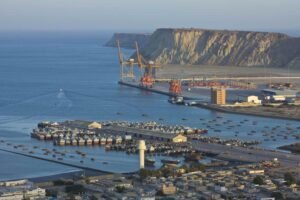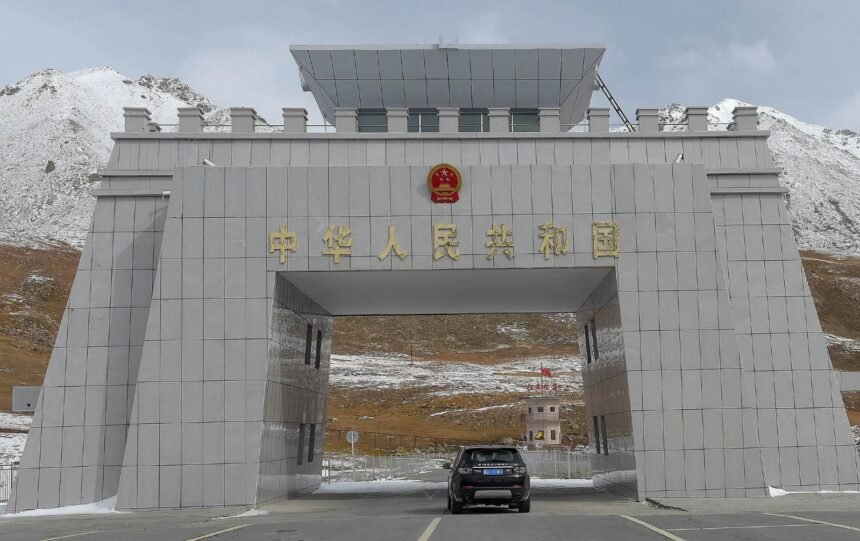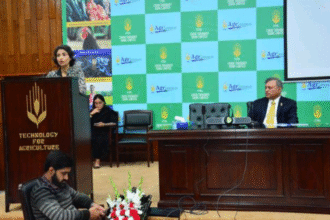Pakistan and China established formal diplomatic relations on May 21, 1951, making Pakistan one of the first non-communist countries to recognize the People’s Republic of China (PRC).
May 21, 2025 marks a significant milestone in the history of Pakistan-China relations – the 74th anniversary of the establishment of diplomatic ties between the two brotherly nations.
Since 1951, Pakistan and China have shared a robust and multifaceted relationship, built on mutual trust, respect, and cooperation. Over the years, this friendship has blossomed into a strong strategic partnership, with both countries working together to promote regional peace, stability, and prosperity.
The 1962 Sino-Indian border war is seen as a turning point for relations between Pakistan and China. Pakistan was able to engage with China in a more conducive way given its neutrality in the Indo-China conflict.
Both countries concluded a border treaty in 1963 to settle the disputes in the Karakoram area. The treaty served as a trust-building and confidence-restoring measure between the two countries.
Thereafter, work on the colossal Karakoram Highway was initiated, which was an unprecedented construction project that linked communication between the two countries through a road in the mountain ranges. The highway was completed in 1978 and became a symbol of the two countries turning mutual antagonistic geographical hurdles into pathways for positive joint economic growth.
During the 1970’s, Pakistan was also very pivotal in facilitating China’s integration to the international community. One of the most significant happenings during this period is the secret visit of US State Secretary Henry Kissinger to China in 1971, which was made possible through Pakistan’s efforts. This paved the way for the first official visit of President Richard Nixon to China in 1972, formally initiating US-China relations.
Relations with China in the 90’s remained one of the few stable relationships Pakistan had. In addition to Pakistan supporting China on Taiwan, China supported Pakistan on the Kashmir dispute.
CHINA-PAKISTAN FREE TRADE AGREEMENT
A shift in the level of economic relationship occurred in 2006 when the two countries signed a free trade agreement which spurred trade and economic interchange between the two countries. This particular agreement marked the onset of advanced collaboration forming the foundation for larger future undertakings.
The China-Pakistan Free Trade Agreement (CPFTA), the first FTA China signed with a South Asian country, was signed in November 2006 during President Hu Jintao’s visit to Pakistan and came into effect in July 2007. Under the Phase-II, Pakistan has secured enhanced and deeper concessions on products of its export interests, revision of safeguards mechanism for protection of the domestic industry, inclusion of the balance of payment clause as a safety valve against balance of payments difficulties, and effective enforcement of the electronic data exchange.
Under the Phase-II of CPFTA, both countries will liberalize 75% of tariff lines for each other in a period of 10 years by China and 15 years by Pakistan. China will immediately eliminate tariffs on 313 most priority tariff lines of Pakistan’s export interest.
Overall, China has granted concessions to products which include textiles and garments, seafood, meat and other animal products, prepared foods, leather, chemicals, plastics, oil seeds, footwear as well as engineering goods including tractors, auto parts, home appliances, machineries, etc.
PRESIDENT XI VISIT TO PAKISTAN
The friendship entered a new era in 2015 with the visit of Chinese President Xi Jinping to Pakistan where he inaugurated the China-Pakistan Economic Corridor (CPEC).
Integrating China and Pakistan within a single infrastructure belt, CPEC became one of the flagship initiatives under the Chinese Belt and Road Initiative (BRI) sponsoring over 60 billion dollar of investments into it. It includes construction of roads, increase the number of power plants, and establish economic zones throughout Pakistan.
CPEC
China-Pakistan Economic Corridor (CPEC) is the flagship project of President Xi’s Belt and Road Initiative (BRI). It marked a new phase in Pakistan – China relations by placing economic cooperation and connectivity at the center of bilateral agenda. CPEC is an economic partnership to transform Pakistan into a geo-economic hub. It was formally launched by the two countries on July 5, 2013 in Beijing during the visit of Pakistan’s Prime Minister to China while first set of CPEC projects were inaugurated during the visit of Chinese President Xi Jinping to Pakistan in April 2015.

The CPEC aims at greater connectivity and trade linkages between Pakistan and China through a vast network comprising roads, rail, fiber optic, energy pipelines, industrial clusters and Special Economic Zones (SEZs). CPEC connects Kashgar region in China with Gwadar region in Pakistan. CPEC will augment the trade potential of China and Pakistan with the rest of the world by linking China with Arabian Sea and Persian Gulf. This way, it will directly benefit billions of people inhabiting China, South Asia, Central Asia and the Middle East.
In its first phase, CPEC has helped develop/upgrade transport and communication infrastructure and address our essential energy needs. A network of highways and motorways has provided more reliable Pakistan-China connectivity across the Karakoram Mountains and smoother inland communications. The CPEC investment and its spin off effects have also generated thousands of jobs.
The CPEC has achieved important early harvest projects and has entered into its second phase which is even more promising as it broadens the scope of cooperation and focuses on socio-economic development, science and technology, agricultural cooperation and industrialization.
COVID-19
At the onset of the COVID outbreak in 2020, China was among the first countries to provide Pakistan with testing kits and medical supplies. This support, along with the provision of vaccines, undeniably fortified their bond amid global turmoil when Pakistan offered to support China during international frictions where certain nations attempted to vilify China regarding the pandemic’s origin.
BILATERAL TRADE
China-Pakistan trade continued its upward trajectory in 2025, further solidifying China’s position as Pakistan’s largest trading partner. China’s exports to Pakistan surged from $16.67 billion in 2023 to $19.62 billion in 2024, marking a 17.7% increase. This sustained growth highlights the strengthening economic partnership between the two nations.
This growth is attributed to strategic agreements such as the China-Pakistan Free Trade Agreement (CPFTA) and initiatives under the China-Pakistan Economic Corridor (CPEC), which have enhanced trade volumes, reduced barriers, and created new export opportunities for Pakistani businesses.
EDUCATION COOPERATION
China is among the most favourite destinations for Pakistani students pursuing higher education. Quality education, cost-effectiveness, easier visa access and large number of Chinese government scholarships are some of the leading incentives for Pakistani students to join Chinese institutions for higher learning.
As of 2024, there are around 27000 Pakistani students in China. Among the Pakistani students, around 7000 are availing scholarships which makes Pakistan the largest recipient of China’s overseas scholarship program. The preference accorded by the Chinese Government to Pakistani students has been one of the outcomes of the China Pakistan Economic Corridor (CPEC) launched in 2013.
Pakistani students are enrolled in a wide range of fields, including Engineering (various disciplines), Computer Sciences, IT, Business Management, Finance, Economics and Trade, International Relations and Chinese Language Courses. Majority of the students are pursuing undergraduate medical degree programs.
CULTURAL EXCHANGES
Cultural exchange between has been a cornerstone of China-Pakistan enduring friendship, fostering mutual understanding and strengthening the bond between the two nations. Our two countries share a rich history of interaction, dating back to the ancient Silk Road, which served as a conduit for trade, ideas and cultural practices.
Today, this historical connection is celebrated through various initiatives, including joint cultural festivals, art exhibitions, and academic collaborations. China-Pakistan Year of Culture in 2023, establishment of Pakistan Study Centers and Urdu Language Majors in Chinese Universities and the establishment of Confucius Institutes in Pakistan played a pivotal role in deepening cultural ties.
Similarly, Pakistani cultural shows in China, featuring traditional music, dance and cuisine, have introduced the vibrant heritage of Pakistan to the Chinese audiences. These exchanges highlight the shared values and mutual respect that underpin the relationship between the two nations.
TOURISM EXCHANGES
Tourism exchanges have also become an increasingly important aspect of China-Pakistan bilateral ties. Our two nations are connected not only by geography but also by a rich history of cultural and economic interactions.

The Karakoram Highway, often referred to as the “Eighth Wonder of the World” serves as a symbolic and physical link between the two countries, offering breathtaking landscapes and a gateway for travelers. In recent years, both governments have actively promoted tourism to strengthen people-to-people connections and showcase the natural beauty, cultural heritage, and hospitality of their respective nations. Initiatives like the China-Pakistan Economic Corridor (CPEC) have further facilitated travel and tourism by improving infrastructure and connectivity.
DEFENCE COOPERATION
Since the establishment of diplomatic relations, both countries have also enhanced their defense ties. Now is a unique and historic time for Pakistan and China as Pakistan won the recent battle from India and destroyed the enemy’s six fighter jets, including three Rafale jets, one MiG-29, one SU-30, and a Mirage 2000, by using Chinese-made J-10C fighter jets.
Earlier in 2019, Pakistan shot down an Indian MiG-21 by a JF-17 fighter jet co-developed and manufactured by the Pakistan Aeronautical Complex and the Chinese Chengdu Aircraft Industry Group.
Likewise, China’s made PL-15E air-to-air missile was also used in the recent airstrikes by Pakistan’s Air Force (PAF) on India, as per media reports.
The recent military combat between the PAF and the Indian Air Force (IAF) has drawn the attention of the whole world towards the effectiveness and accuracy of Chinese weaponry, including fighter aircraft and air defense missiles.
The military experts on international media are discussing the war arms credibility of China and the capability of the use of these weapons by Pakistan’s forces in a short-term military encounter between the two neighbors and traditional rivals. Resultantly, the market of the Chinese Aircraft manufacturers goes up, and according to Bloomberg, Chengdu Aircraft Corporation’s market value rose by more than 55 billion yuan, underscoring investor confidence in the jet’s perceived battlefield effectiveness.
Future Prospects
As Pakistan and China celebrate 74 years of diplomatic relations, both countries are poised to further strengthen their strategic partnership. The two nations have identified new areas of cooperation, including technology, innovation, and sustainable development. With the CPEC project entering its second phase, Pakistan and China are expected to deepen their economic ties, promoting mutual benefit and prosperity.
The Pakistan-China relationship is a testament to the power of friendship and cooperation. Over the past 74 years, both countries have built a strong foundation of trust, respect, and mutual benefit. As they look to the future, Pakistan and China are well-positioned to further enhance their strategic partnership, promoting peace, stability, and prosperity in the region.






